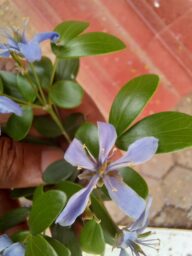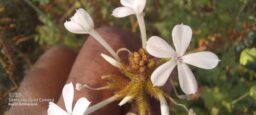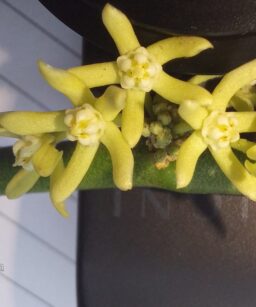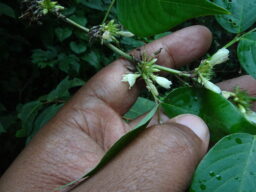Common Name: Lignum Vitae, Tree of life Medium sized tree with cream color bark grows to a height of about 8-10 meters. The leaves are arranged in opposite manner. The leafing node is enlarged in thickness They have bipinnate, opposite and paripinnate leaflet arrangement.. The leaflets are elliptic in shape somewhat unequal. The flowers have … Read More “Guaiacum officinale- Zygophyllaceae- Caltrop family)” »
Category: Tamil Nadu
Common Name: Ceylon Lead Wort. Tamil Name: Chittramoolam Erect plant with glabrous stem grows to a height of about one and a half meters. This plant has pan tropical distribution and is seen all over Peninsular India. The leaf arrangement is simple and alternate. The leaves are elliptic-ovate in shape; base attenuate and apex acute. … Read More “Plumbago zeylanica (Plumbaginaceae –Plumbago family)” »
Cynanchum viminale subsp. Brunonianum (Apocynaceae- Oleander family) Common Name: Sour Creeper. Tamil Name: Kodikkalli, Somamum This plant is a twinning climber; plant appears leaf-less with cylindrical succulent green stem. The plant is often seen in forest fringes around dry deciduous forest ranges in Tamilnadu. Fragrant white flowers are seen bunched laterally on branches in sessile … Read More “Cynanchum viminale subsp. Brunonianum” »
Common Name: Woolly coneflower. This plant is endemic to Western Ghats and is generally seen in altitudes above 2000 msl. The plant is shrub-size and forms a neat one meter high dome shape. The branches are tetragonal in shape. The entire plant is cottony and wooly. The leaves are elliptic-ovate and rounded at base. The … Read More “Strobilanthes lanatus (Acanthaceae- Acanthus family)” »
Common Name: Triangular horse bush This trifoliate shrub was encountered near Malampuzha dam in Palakkad district of Kerala. The branches are three angled. The leaves are narrowly elliptic and flowers are white in color. Flowers are bunched around the leaf axis. The fruit is in the form of a curved sutured pod. This plant has … Read More “Dendolobium triangulare (Fabaceae- Pea Family)” »





